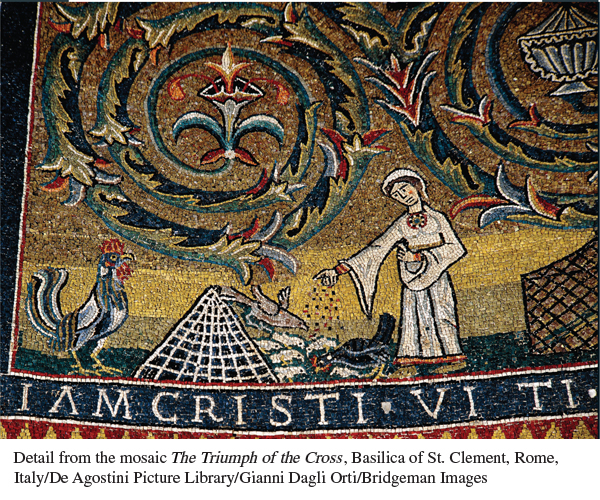A History of Western Society: Printed Page 284
A History of Western Society, Value Edition: Printed Page 272
A History of Western Society, Concise Edition: Printed Page 285
Introduction for Chapter 10
10
Life in Villages and Cities of the High Middle Ages
1000–1300
Kings, emperors, nobles, and their officials created political and legal institutions that structured many aspects of life in the High Middle Ages, but ordinary people typically worked and lived without paying much attention to the political developments that took place at faraway centers of power. Similarly, the conflicts between popes and secular leaders were dramatic, but for most people religion was primarily a matter of joining with neighbors and family members in rituals to express beliefs, thanks, and hopes.
While the routines of medieval life followed familiar rhythms for centuries, this does not mean that life in the High Middle Ages was unchanging. Agricultural improvements such as better plows and water mills increased the amount and quality of food, and the population grew. Relative security and the increasing food supply allowed for the growth and development of towns and a revival of long-

CHAPTER PREVIEW
What was village life like in medieval Europe?
How did religion shape everyday life in the High Middle Ages?
What led to Europe’s economic growth and reurbanization?
What was life like in medieval cities?
How did universities serve the needs of medieval society?
How did literature and architecture express medieval values?
Chronology
| 1050–1300 | Steady rise in population; period of milder climate |
| ca. 1100 | Merchant guilds become rich and powerful in many cities; artisans begin to found craft guilds |
| 1100s | Hospitals and other homes for the sick begin appearing |
| 1100–1300 | Height of construction of cathedrals in Europe |
| 1160s | Silver mines opened in Germany, allowing for more coinage |
| ca. 1200 | Founding of first universities |
| 1215 | Fourth Lateran Council orders Jews and Muslims to wear distinctive clothing |
| 1225–1274 | Life of Thomas Aquinas; Summa Theologica |
| 1241 | Contract between Lübeck and Hamburg, first in the Hanseatic League |
| ca. 1300 | Bill of exchange becomes most common method of commercial payment in western Europe |
| 1300s | Clocks in general use throughout Europe |